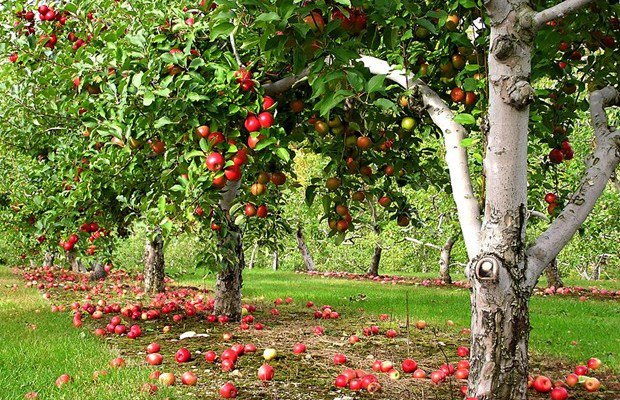Food forests or Forest gardening have been around for a long time with many of the native cultures practicing this form of sustainable agriculture. It is a form of low-maintenance plant-based food production which replicates natural ecosystems, incorporating fruit and nut trees, shrubs, herbs, running vines and perennial vegetables. Beneficial plants and companion planting is a big part of the food forest system.
Unlike much of the modern industrial agricultural system which relies heavily of inputs such as fossil fuels and artificial herbicides, pesticides and fertilizers, a food forest once established is self-regulating and highly abundant in yield.
Why Food Forests?
- Forests are home to approximately 50-90% of all the world’s terrestrial (land-living) biodiversity — including the pollinators and wild relatives of many agricultural crops (Source: WWF Living Planet Report 2010)
- Tropical forests alone are estimated to contain between 10-50 million species – over 50% of species on the planet.
- Rainforests cover 2% of the Earth’s surface and 6% of its land mass, yet they are home to over half of the world’s plant and animal species.
It is evident that forests themselves are synonymous with life, biodiversity and fertility. Where life gathers, complex and mutually beneficial relationships are created between organisms; natural harmonious communities form, and life forms multiply and proliferate. If forests are where most of the life on the planet is, then anything less than a forest is most likely less suited to supporting life. Life supports life, yet we have forgotten that we are in fact part of the web of life itself, and depend on other life to sustain ours.

Unfortunately society has been conditioned to clear the land and create unsustainable fields which need high inputs to be maintained. Food forests are abundant and can yield significantly more than the conventional farming and mono cropping that dominates much of the industrial landscape today. As well as being high yielding food forests are high in biodiversity and life. Food forests can be developed and grown in most climate zones and because they involve vertical stacking are great for suburban and urban areas. Check out this clip to see how a couple have transformed a traditional suburban landscape into a highly productive forest garden.
The Layers Of A Food Forest
1. Canopy or Tall Tree Layer
Typically over 30 feet (~9 meters) high. This layer is for larger Forest Gardens. Timber trees, large nut trees and nitrogen-fixing trees are the typical trees in this category. There are a number of larger fruiting trees that can be used here as well depending on the species, varieties and rootstocks used.
2. Sub-Canopy/Large Shrub Layer
Typically 10-30 feet (3-9 meters) high. In most Forest Gardens, or at least those with limited space, these plants often make up the acting Canopy layer. The majority of fruit trees fall into this layer.
3. Shrub Layer
Typically up to 10 feet (3 meters) high. The majority of fruiting bushes fall into this layer. Includes many nut, flowering, medicinal and other beneficial plants as well.
4. Herbaceous Layer
Plants in this layer die back to the ground every winter… if winters are cold enough, that is. They do not produce woody stems as the Shrub layer does. Many cullinary and medicinal herbs are in this layer. A large variety of other beneficial plants fall into this layer.
5. Groundcover/Creeper Layer
There is some overlap with the Herbaceous layer and the Groundcover layer; however plants in this layer are often shade tolerant, grow much closer to the ground, grow densely to fill bare patches of soil, and often can tolerate some foot traffic.
6. Underground Layer
These are root crops. There are an amazing variety of edible roots that most people have never heard of. Many of these plants can be utilized in the Herbaceous Layer, the Vining/Climbing Layer, and the Groundcover/Creeper Layer.
7. Vertical/Climber Layer
These vining and climbing plants span multiple layers depending on how they are trained or what they climb all on their own. They are a great way to add more productivity to a small space, but be warned. Trying to pick grapes that have climbed up a 60 foot Walnut Tree can be interesting to say the least.
8. Aquatic/Wetland Layer
This is my first new layer to the Forest Garden. Some will say that a forest doesn’t grow in the water, so this layer is inappropriate for the Forest Garden. I disagree. Many forests have streams flowing through or ponds in the center. There are a whole host of plants that thrive in wetlands or at the water’s edge.
There are many plants that grow only in water. To ignore this large list of plants is to leave out many useful species that provide food, fiber, medicinals, animal feed, wildlife food and habitat, compost, biomass, and maybe most important, water filtration through bioremediation (or phytoremediation). We are intentionally designing Forest Gardens which incorporate water features, and it is time we add the Aquatic/Wetland Layer to the lexicon.
9. Mycelial/Fungal Layer
This is my second new layer to the Forest Garden. Fungal networks live in healthy soils. They will live on, and even within, the roots of plants in the Forest Garden. This underground fungal network transports nutrients and moisture from one area of the forest to another depending on the needs of the plants. It is an amazing system which we are only just beginning to comprehend.
As more and more research is being conducted on how mycelium help build and maintain forests, it is shocking that this layer has not yet been added to the list. In addition to the vital work this layer contributes to developing and maintaining the forest, it will even provide mushrooms from time to time that we can utilize for food and medicine. If we are more proactive, we can cultivate this layer intentionally and dramatically increase our harvest.

